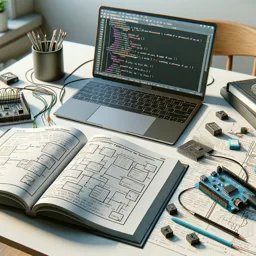Introduction
Developing a desktop application can be a rewarding challenge for both beginners and experienced programmers. With several established programming languages available, such as Python, Ruby, Java, and C, selecting the right one is a crucial first step. This article explores the unique strengths, common use cases, and considerations for each language to help you make an informed decision and set your desktop project up for success.
Python: Simplicity and Rapid Development
Python is a popular choice due to its clean syntax and extensive libraries. With frameworks like Tkinter and PyQt, Python enables rapid prototyping and development of robust desktop applications. Its strong community support and focus on readability make it especially appealing for beginners and those seeking quick delivery for simple to medium-complexity projects.
- Best for: Prototyping, automation tools, education, and smaller applications.
- Strengths: Easy to learn, cross-platform support, rich ecosystem.
- Consideration: Slower execution speed compared to compiled languages.
Ruby: Elegant Code with Productivity in Mind
Although less common for desktop apps, Ruby offers concise syntax and developer productivity. Frameworks like Shoes allow for simple GUI applications, while JRuby enables leveraging Java’s extensive libraries. Ruby is especially suited for rapid prototyping and situations where developer happiness and code readability are priorities.
- Best for: Lightweight tools, utilities, and applications with quick iteration cycles.
- Strengths: Expressive syntax, high developer productivity.
- Consideration: Limited desktop frameworks; not typically used for performance-intensive applications.
Java: Robustness and Cross-Platform Power
Java has long been a standard-bearer for enterprise and cross-platform desktop software. Swing and JavaFX provide comprehensive tools for building rich user interfaces. Java’s focus on object-oriented design, memory management, and platform independence makes it a solid choice for scalable, professional-grade desktop applications.
- Best for: Enterprise applications, POS systems, graphical tools, and academic projects.
- Strengths: Write-once-run-anywhere, strong type safety, mature ecosystem.
- Consideration: Verbose syntax and higher memory consumption compared to some languages.
C: Performance and System Access
If your project requires maximum performance or direct hardware interaction, C remains unmatched. Many high-performance, resource-intensive desktop applications and operating system utilities are written in C. While it lacks high-level GUI frameworks compared to the others, C’s control over system resources and execution speed is ideal for demanding software such as graphics editors and custom tools.
- Best for: Performance-critical software, system utilities, and legacy application development.
- Strengths: Fast execution, fine system control, wide platform support.
- Consideration: Steeper learning curve; manual memory management increases development time and complexity.
Making the Right Choice
No single programming language is universally superior; the best choice depends entirely on your project’s requirements, your team’s expertise, and your long-term goals. Consider factors such as your target platforms, desired performance, development speed, and ongoing maintainability when making your selection.
By understanding the unique characteristics of Python, Ruby, Java, and C, you can lay a strong technical foundation and maximize your desktop application’s potential.

































